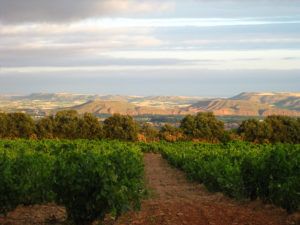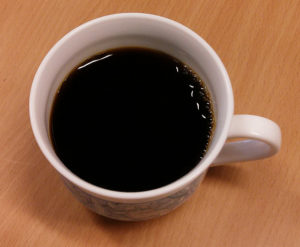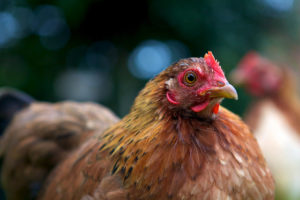**PERSONAL NOTE: My apologies for the long delay between posts lately. My baby and my other paid assignments have been keeping me busier than ever! Thank you for your patience! Hope to post more frequently again in the near future!
————————————-
It’s very difficult, if not impossible, for one single person to thoroughly review every single piece of peer reviewed literature related to wine that is published every day. This Wine Literature Review Lightning Round series presents three new papers (within the past year or two) in one post by briefly summarizing the research and linking to the abstract in order for you to pursue further if you’re interested.
VITICULTURE
“Improving berry and wine quality attributes and vineyard economic efficiency by long-term deficit irrigation practices under semiarid conditions”, published in May 2016 in the journal Scientia Horticulturae, aimed to determine the effects of deficit irrigation (both water

Photo courtesy Flickr user Tammy Friesen
volume and placement) on long-term water use efficiency of grapevines, as well as grape and wine quality. Additionally, the study also examined the economic efficiency of different deficit irrigation treatments, as well as profitability.
Brief Methods
This study was performed in a 1-ha experimental Monastrell vineyard in Murcia, Spain (considered to be semi-arid). From 2006 to 2012, 5 irrigation treatments were applied: 1) Sustained deficit irrigation at 60%-40% crop evapotranspiration for the entire season (308-211mm/year); 2) moderate regulated deficit irrigation strategy using conventional drip irrigation (110-191mm/year); 3) moderate regulated deficit irrigation strategy using partial root-zone drying irrigation (110-191mm/year); 4) a more severe regulated deficit irrigation strategy using conventional drip irrigation (90-144mm/year); and 5) a more severe regulated deficit irrigation strategy using partial root-zone drying irrigation (90-144mm/year).
The following were measured and analyzed: leaf mineral content, diffuse light intensity, temperature, relative humidity, Brix, solutes, juice volume per berry, weight of juice per berry, number of seeds per berry, weights of skin, pulp, and seeds, yield per vine, clusters per vine, cluster weight, berries per cluster, berry weight, total soluble solids, pH, TA, organic acids, flavonols, amino acids, and polyphenols. For the wines made from the experimental grapes, chemical composition was measured and analyzed.
Brief Results/Conclusions
Overall, results showed that the sustained deficit irrigation treatment (i.e. more water than the other treatments) improved berry quality and economic efficiency, however, water use efficiency, as well as grape and wine polyphenolic content was reduced. On the other hand, the regulated deficit irrigation treatments (both partial root-zone drying and conventional drip) resulted in increased grape and wine polyphenolic content, while economic efficiency was reduced.
Vines undergoing greater water stress (i.e. received less water during the growing season) resulted in lower yields and overall lower grape and wine quality than the more moderate irrigation level treatments.
The treatment that resulted in the greatest long-term yield, water use efficiency, grape anthocyanin content, and economic efficiency was the moderate regulated deficit irrigation strategy using partial root-zone drying irrigation (110-191mm/year).
Analysis of the results indicated that the optimum water volume for irrigation was 134-200mm/year and the optimum range of yield was 8,000-12,000kg/ha for long-term grape and wine quality, as well as water and economic efficiency. NOTE: these values are applicable only for Monastrell vineyards in semi-arid environmental conditions.
Source:
SENSORY MATTERS
“Not All Flavor Expertise is Equal: The Language of Wine and Coffee Experts”, published in June 2016 in the journal PLoS ONE, aimed to determine whether wine and coffee experts were better than novices at naming smells and tastes in their respective beverage of expertise (a given??), and also whether or not the experts were able to describe smells and flavors of the other beverage type just as well as the expert of that particular beverage (i.e. can the wine experts describe the way a coffee tastes the same way the coffee experts would, and can the coffee experts describe the way a wine tastes the same way a wine expert would).
Brief Methods
63 people participated in this study—some experts and some novices for both coffee and wine consumption.
Participants tasted 5 different red wines and 5 different coffees, then afterwards

Photo courtesy Flickr user jgbarah
completed odor awareness questionnaires as well as odor and taste naming tasks for “everyday” smells/tastes (using an odor pen with specific known smells).
Analysis consisted of determining the length of the descriptions, as well as the detailed wording used in the descriptions. Additionally, how similar the descriptions were for each wine and coffee between individual participants was also analyzed.
(Note: the methods section was pretty detailed, so if you want to know some specifics, just ask.)
Brief Results/Conclusions
In general, and not surprising, results showed that expertise was advantageous for naming specific aromas or flavors in both wine and coffee. In other words, while the novice might say the coffee or wine was generally “nice” or “fruity”, the expert might delve into more specific flavors and aromas. Also, wine experts were found to be more consistent with their naming rubrics than coffee experts or novices (i.e. they said the same things more often). On the other hand, results showed that coffee experts were not very consistent from one person to the next in terms of the words they used to describe the beverage. Finally, neither the wine nor coffee experts were very good at identifying “everyday” smells and tastes that were not related to their area of expertise.
Overall, this study basically found that experts are good at describing the beverage in which they achieved their expertise, and not so much with other odors and tastes. This does not surprise me at all—you train to be able to smell and taste something, therefore you become good at it and better than someone who has never trained at all. Seems like a no-brainer to me, but I suppose it’s always good to have the scientific support just in case!
Source:
CHEMISTRY/FOOD PROCESSING
“Effect of Touriga Nacional Grape Extract on Characteristics of Mechanically Deboned Chicken Meat Kept Under Frozen Storage”, published in 2016 in the Journal of Food Process Engineering, aimed to evaluate any possible preservative/antioxidant effects Touriga Nacional grape waste might have on frozen chicken meat.
Brief Methods
Mechanically deboned chicken meat underwent three different treatments: 1) the control treatment with nothing added, 2) the addition of synthetic antioxidants, and 3) the addition of extract from Touriga Nacional grapes. The meat was then frozen and sampled for testing after 1 day and again at 210 days. The following were measured and analyzed at both sample dates: moisture, protein, fat, pH, color, antioxidant capacity/oxidative stability, and haem iron content.
Brief Results
Some results of this study showed that adding grape extract to chicken meat provided some protection during the freezing process over 210 days (7 months). The chicken appeared to become less red, less yellow, and slightly darker by the addition of the grape

Photo courtesy Flickr user Thomas Vlerick
extract. Additionally, chicken meat treated with higher concentrations of grape extract was able to withstand longer time in the freezer. In terms of antioxidant capacity, results showed that grape extract addition to the chicken meat increased it, with extracts higher in phenolic content providing greater antioxidant protection than extracts lower in the compounds.
Overall, the researchers concluded that grape extract could be a good way to provide antioxidant protection for chicken meat during frozen storage, though further analysis regarding optimum concentrations as well as sensory analysis must be done.
Source:
